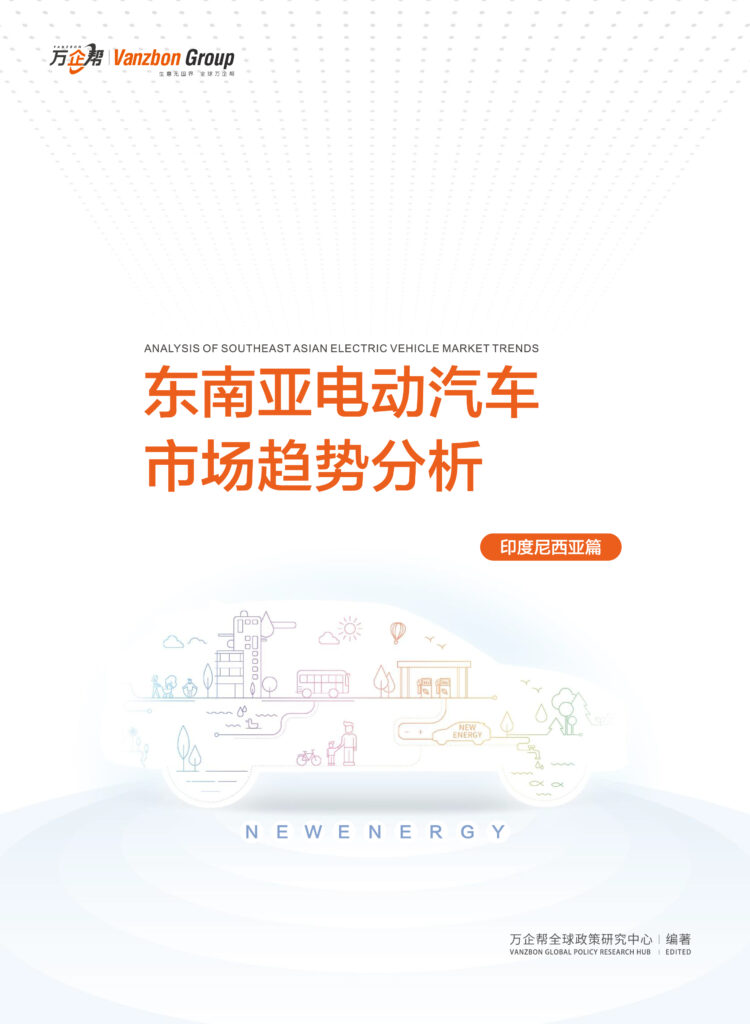As globalization accelerates, the importance of intellectual property (IP) in the international market is becoming increasingly prominent. IP is not only the core of corporate competitiveness but also a significant driver of national economic development. To protect intellectual property globally, multiple international treaties and agreements have emerged, covering areas such as patents, trademarks, and copyrights. These treaties provide legal frameworks and implementation mechanisms for global IP protection, promoting technological exchange between countries and enhancing legal safeguards for innovation. As one of the world’s major economies, Japan occupies an important position in the international IP system, and these international treaties have had a profound impact on its IP protection and legal system.
This article will provide an in-depth analysis of major international IP treaties, discuss their key points, characteristics, and their impact on Japan, and analyze the latest developments and future trends of these treaties. Through a detailed analysis of the role and scope of application of each treaty, this article will provide Japanese companies and relevant institutions with in-depth insights and strategic advice on international IP protection.
Overview of International Intellectual Property Treaties
1.1 Historical Background of International IP Treaties
The birth of international IP protection treaties is an inevitable result of globalization and technological innovation. By the end of the 19th century, as the industrial revolution progressed and technological exchanges between countries became more frequent, IP infringement issues gradually emerged, prompting multiple countries to seek unified IP protection mechanisms. Early IP protection treaties, such as the Paris Convention of 1883 and the Berne Convention of 1886, laid the foundation for the modern international IP system. The signing of these treaties not only promoted the globalization of IP protection but also advanced cooperation between countries at the legal level.
By the end of the 20th century, with the rapid development of information technology and the deepening of global trade, IP issues became increasingly complex. The differences in legal systems between countries led to frequent cross-border IP disputes. To address these challenges, several new international treaties were introduced, such as the Agreement on Trade-Related Aspects of Intellectual Property Rights (TRIPS) of 1994 and the Patent Cooperation Treaty (PCT). These treaties established a more comprehensive legal framework for global IP protection.
1.2 Overall Impact of IP Treaties on Japan
As a frontier country in global technological innovation, IP protection is crucial for Japan’s economic development. By joining multiple international IP treaties, Japan can better protect the innovative achievements of its domestic enterprises while also enhancing foreign companies’ trust in the Japanese market. These treaties not only regulate cross-border technological cooperation but also provide legal support for Japanese companies’ IP protection in the global market.
For example, the Paris Convention provides Japanese companies with priority rights, allowing them to enjoy priority rights for patents and trademarks in multiple countries. The TRIPS Agreement strengthens global IP protection standards, providing stronger legal basis for patent and trademark protection of Japanese multinational companies in the global market. Furthermore, the Madrid System for the International Registration of Marks and the Patent Cooperation Treaty have simplified IP application procedures for Japanese companies, reducing the costs and complexity of patent and trademark applications.
1.3 Overview of Latest Development Trends
With the rapid development of technology, the scope and content of IP protection are constantly expanding, especially in emerging fields such as the digital economy, artificial intelligence, and biotechnology. The legal framework for IP is facing new challenges. In recent years, multiple international treaties have begun to strengthen the protection of digital IP, such as the WIPO Internet Treaties and the Beijing Treaty on Audiovisual Performances. These treaties have not only played an important role in protecting traditional IP but have also laid the foundation for IP protection in new technologies.
Japan has played an active role in the formulation of international IP treaties in these emerging fields, further consolidating its leading position in global technological innovation through these treaties. In the future, as more countries join these treaties and agreements, the global IP protection system will become more cohesive and standardized.
Impact of the Paris Convention and the Berne Convention
2.1 Analysis of Key Points of the Paris Convention
The Paris Convention is one of the foundational treaties in the history of international IP protection, signed in 1883 to protect industrial property, including patents, trademarks, and industrial designs. The core principle of this convention is to provide “priority rights” to patent applicants from member countries. This means that after an applicant submits a patent application in one country, they can apply for the same patent in other member countries within a specified time (usually 12 months) and enjoy the same priority as the first application.
For Japanese companies, the Paris Convention provides an important tool for international IP protection. Through the priority system, Japanese companies can quickly apply for patents in multiple countries and regions, preventing competitors from preemptively applying for the same or similar patents in other countries. Additionally, the Paris Convention provides a legal framework for cross-border trademark protection, allowing Japanese companies to protect their brands and trademarks more efficiently on a global scale.
The Paris Convention also establishes the principle of “national treatment,” which requires member countries to provide foreign applicants with the same legal protection as domestic applicants. This principle ensures that Japanese companies can enjoy fair legal treatment when applying for patents or trademarks in other countries. This greatly enhances the competitiveness of export-oriented Japanese companies in the international market.
2.2 Analysis of Key Points of the Berne Convention
The Berne Convention is an international treaty on copyright protection, signed in 1886, with the main purpose of protecting copyrights for literary and artistic works. This treaty provides a unified legal framework for global copyright protection, requiring member countries to ensure that foreign works enjoy the same legal protection as domestic works.
For Japan’s content industries, such as animation, film, and music, the Berne Convention is crucial. As a global powerhouse in anime and cultural exports, Japan can effectively protect the copyrights of its cultural products worldwide through the Berne Convention. For example, Japanese anime works often face piracy issues during global distribution, and the Berne Convention provides Japanese companies with a legal basis to take legal action in other member countries when infringement occurs.
Furthermore, the Berne Convention stipulates the principle of automatic protection, meaning that works are protected by copyright without the need for registration. This provision provides greater convenience for international copyright protection of Japan’s creative industries, as companies do not need to undergo complex copyright registration processes in multiple countries for each work, greatly reducing management costs.
2.3 Comprehensive Impact of the Two Major Conventions on Japan
The Paris Convention and the Berne Convention together form the basic framework for Japan’s international IP protection. These two conventions provide Japanese companies with legal safeguards in multiple aspects, including patents, trademarks, and copyrights, ensuring their competitive advantage on a global scale. For Japan’s high-tech industries and cultural industries, the signing and implementation of these conventions have greatly promoted the level of IP protection in the international market.
Moreover, with the rapid development of the digital economy, these traditional international conventions are constantly being adjusted and updated. For example, in the context of increasingly serious global internet piracy issues, the Berne Convention is gradually strengthening the protection of digital copyrights. Japanese companies need to continuously track the latest changes in these conventions and adjust their IP protection strategies in a timely manner to ensure that their IP is fully protected in the global market.
Impact of the Agreement on Trade-Related Aspects of Intellectual Property Rights (TRIPS) on Japan
3.1 Core Content of the TRIPS Agreement
The Agreement on Trade-Related Aspects of Intellectual Property Rights (TRIPS) is a multilateral IP agreement under the World Trade Organization (WTO) framework, adopted in 1994 to unify global IP protection standards. The special feature of the TRIPS Agreement is that it closely links IP with international trade, stipulating minimum protection standards for patents, trademarks, copyrights, and other fields in member countries, and requiring all WTO members to comply with these standards.
The core content of the TRIPS Agreement includes: broad applicability of patent rights, minimum 20-year patent protection period, non-discriminatory principle of trademark rights, and extensive copyright protection. In addition, TRIPS also specifies procedures for dealing with IP infringements, requiring member countries to establish effective judicial and administrative mechanisms to ensure timely prevention and compensation for infringements.
3.2 Advantages and Challenges of TRIPS for Japanese Companies
For Japanese companies, the implementation of the TRIPS Agreement brings numerous advantages. Firstly, TRIPS provides unified legal standards for cross-border IP protection of Japanese companies, greatly simplifying the complexity of applying for patents and trademarks in multiple countries. For example, when Japanese pharmaceutical companies introduce new drugs to the global market, TRIPS ensures that their patent rights are legally protected for a minimum of 20 years in all WTO member countries, providing strong support for the global expansion of enterprises.
However, the TRIPS Agreement also poses certain challenges for Japanese companies. As the implementation of TRIPS requires all WTO members to comply with unified IP standards, some developing countries have had to change their original IP policies, resulting in legal environments and enforcement strengths that cannot quickly align with developed countries. Therefore, Japanese companies may face ineffective enforcement and lengthy litigation procedures when protecting their IP rights in these countries.
To address these challenges, Japanese companies need to adopt more flexible IP strategies under the TRIPS framework. For example, companies can promote localized IP protection through cooperation with local governments, or establish a more solid market foundation in countries and regions with weak IP protection through technology licensing and patent sharing.
3.3 Latest Development Trends of TRIPS
As the global economy continues to develop, the scope and content of the TRIPS Agreement are constantly being updated. In recent years, the TRIPS Agreement has paid special attention to IP protection issues in emerging technology fields, such as biotechnology, artificial intelligence, and blockchain technology. As a technology leader in these fields, Japan needs to actively participate in the revision and updating of TRIPS to ensure that its IP in emerging technologies can be fully protected internationally.
In addition, the TRIPS Agreement is continuously strengthening the protection of digital IP. For example, in response to infringement on global e-commerce and internet platforms, the latest revision of TRIPS advocates strengthening digital copyright protection through technical means and promotes member countries to update their relevant laws. This presents both opportunities and challenges for Japanese internet companies and e-commerce platforms. Companies need to actively address these emerging issues and ensure their IP advantages in the global digital economy through technological innovation and legal means.
Impact of the Patent Cooperation Treaty (PCT) and the Madrid System for the International Registration of Marks
4.1 Analysis of Key Points of the Patent Cooperation Treaty (PCT)
The Patent Cooperation Treaty (PCT), introduced by the World Intellectual Property Organization (WIPO) in 1970, is one of the most important multilateral treaties in the international patent application system. This treaty allows applicants to obtain patent protection in multiple countries and regions simultaneously by submitting a single patent application, simplifying the patent application process and saving time and costs for businesses. The main feature of PCT is providing international search and preliminary examination services, helping applicants evaluate the validity and technical originality of their patents before entering various national patent offices.
For Japanese companies, PCT provides an effective global patent application tool. Through PCT, Japanese companies can simplify their patent application process and avoid duplicate applications due to differences in patent systems across countries. For example, a Japanese automobile manufacturer can apply for patents in multiple countries worldwide through PCT, ensuring comprehensive protection of its core technologies in major markets. The international search reports and preliminary examination opinions provided by PCT offer valuable references for companies to optimize their patent application strategies.
Furthermore, PCT allows companies more time to decide in which countries and regions to continue pursuing patent applications. According to the PCT treaty, companies have 30 months after application to decide whether to enter the national phase, providing more flexibility for companies, especially when technology is still in the research and development stage or market demand is uncertain. For instance, a Japanese technology company used this time to conduct market research after submitting a PCT application, ultimately deciding to proceed with patent protection in the United States, Europe, and China.
4.2 Analysis of Key Points of the Madrid System for the International Registration of Marks
The Madrid System for the International Registration of Marks is another important international treaty managed by WIPO, signed in 1891. This system allows applicants to register trademarks simultaneously in multiple countries through a single application, simplifying the international trademark registration process. Through the Madrid System, companies can avoid the cumbersome procedures of submitting trademark applications separately in each country, greatly reducing the time and cost of international trademark applications.
For Japanese companies, especially consumer goods companies that rely on brand image and trademark protection, the Madrid System is an important international trademark registration tool. For example, a well-known Japanese fashion brand has registered its core brand trademark globally through the Madrid System, ensuring legal protection of its trademark in different markets. Through this system, companies can cover trademark registration needs in multiple countries in a short time, avoiding legal differences and high costs associated with applying separately in different countries.
Another important advantage of the Madrid System is its simplified management process. Companies can uniformly manage and renew trademarks through WIPO, avoiding the complex operations of handling trademark updates and maintenance separately in multiple countries. For instance, a Japanese electronics company manages its global trademarks through the Madrid System, needing only to submit one renewal application to WIPO to ensure the continued validity of its trademarks in multiple countries. This simplified management approach helps companies significantly reduce the costs and administrative burden of global trademark management.
4.3 Comprehensive Impact of PCT and Madrid System on Japan
The Patent Cooperation Treaty (PCT) and the Madrid System provide Japanese companies with efficient tools for global intellectual property application and management, enabling them to better protect patents and trademarks in international markets. For Japanese enterprises, these two systems not only help them rapidly establish intellectual property rights globally but also save substantial application costs and time, enhancing their competitiveness in the global market.
In the context of intensifying global technological competition, the roles of PCT and Madrid System become increasingly crucial. Through these international systems, Japanese companies can not only ensure legal protection of their technologies and brands worldwide but also utilize the simplified processes of these systems to improve the efficiency of their intellectual property management. For instance, Japan’s consumer electronics and automotive industries widely rely on PCT for patent applications and the Madrid System for trademark management, ensuring their continued competitiveness in the global market through these treaty tools.
As global markets continue to expand and international competition intensifies, Japanese companies will continue to rely on PCT and Madrid System in their future international intellectual property strategies, ensuring their global leadership in technology and branding.
The Beijing Treaty on Audiovisual Performances and the “Internet Treaties” in the Digital Era
5.1 Key Points of the Beijing Treaty on Audiovisual Performances
The Beijing Treaty on Audiovisual Performances is an important international treaty adopted by the World Intellectual Property Organization (WIPO) in 2012 to address the development of the global digital media industry. The treaty aims to provide international copyright protection for performers in audiovisual works worldwide, ensuring that their legal rights and interests in performances are effectively safeguarded globally. The treaty particularly focuses on performance rights and economic rights in the digital environment, including dissemination and distribution on digital platforms.
For Japan’s film, animation, and music industries, the Beijing Treaty provides an important legal tool to protect performers’ rights globally. Japanese audiovisual works and anime have a wide audience worldwide, but piracy and unauthorized distribution still pose significant threats in the global market. Through the Beijing Treaty, Japanese content creators and performers can ensure effective protection of their works on global digital platforms and pursue legal action against infringement.
For example, a Japanese animation company can protect the performances of actors in its animated films through the Beijing Treaty and take swift legal action when unauthorized online distribution is discovered. The treaty provides more comprehensive legal protection for Japan’s film industry and cultural sector, serving as an important basis for combating infringement, especially when facing global digital piracy issues.
5.2 Key Points of the “Internet Treaties”
The “Internet Treaties” refer to the WIPO Copyright Treaty (WCT) and the WIPO Performances and Phonograms Treaty (WPPT), established by WIPO to address the development of global internet and digital media in the information age. The main purpose of these treaties is to regulate intellectual property protection in the online environment, particularly the protection of copyright and related rights, ensuring that works are not threatened by infringement during digital and network dissemination. These treaties focus specifically on the reproduction, distribution, and display of digital works, and establish relevant implementation mechanisms for member states.
Japan’s digital content industry holds a significant position globally, especially in music, gaming, and software sectors. Through the “Internet Treaties,” these contents can receive more effective legal protection worldwide. Japanese digital content enterprises, such as music streaming platforms and electronic game companies, can ensure that their digital works’ copyrights are not infringed upon in the global internet environment through these treaties, reducing unauthorized downloads and illegal distribution.
For instance, a Japanese music streaming platform can ensure the protection of its music copyrights globally through the “Internet Treaties” and effectively combat online piracy and illegal downloads. These treaties not only enhance the international market competitiveness of Japan’s digital content industry but also provide more legal guarantees for creators, ensuring the legal circulation of their works.
5.3 Impact and Trends of Digital Treaties on Japan
The Beijing Treaty on Audiovisual Performances and the “Internet Treaties,” as international treaties addressing the digital age, have had a profound impact on Japan’s cultural and digital content industries. These treaties provide Japanese companies with legal bases for protecting works and performances in the digital environment, ensuring that their copyrights are not infringed upon globally. Especially in the global digital wave, these treaties offer new legal frameworks for Japan’s creative industries, enabling them to more effectively combat piracy and illegal distribution in the international market.
In the future, as digital technologies continue to advance and the global internet environment becomes increasingly complex, Japanese companies need to continue focusing on the updates and implementation of these treaties. Particularly with the rise of emerging technologies such as artificial intelligence, virtual reality, and blockchain, intellectual property protection will face more challenges. Companies need to constantly adjust their intellectual property protection strategies to maintain their leading position in the digital age.
Future Prospects of International Intellectual Property Treaties and Japan’s Response Strategies
6.1 Challenges of Emerging Technologies to International Intellectual Property Treaties
With the development of emerging technologies such as artificial intelligence, blockchain, Internet of Things, and biotechnology, traditional international intellectual property treaties face increasingly more challenges. The emergence of these new technologies makes it difficult for traditional intellectual property legal frameworks to fully adapt to the innovative characteristics of modern technology. For example, can content or inventions generated by artificial intelligence apply for patent or copyright protection? How can blockchain technology play a role in intellectual property management? These issues will become key topics in future international intellectual property treaties.
For Japanese companies, emerging technologies are not only core areas of technological innovation but also the frontier of global intellectual property protection. Companies need to closely monitor the latest developments in international treaties in these emerging technology fields and adjust their intellectual property protection and management strategies according to changes in the international legal framework. For instance, in the field of artificial intelligence technology, Japanese technology companies can ensure global protection of their algorithms and machine learning models through patent applications, while actively participating in the formulation of international treaties to ensure legal advantages for their technologies in future global markets.
6.2 Strategic Directions for Japan’s Participation in International Intellectual Property Treaties
As a global leader in technological innovation, Japan plays an important role in the formulation and revision of international intellectual property treaties. In the future, Japan should continue to strengthen cooperation with international organizations such as the World Intellectual Property Organization (WIPO) and the World Trade Organization (WTO), promote the formulation of intellectual property treaties in emerging technology fields, and ensure that these treaties provide legal guarantees for the competitiveness of Japanese companies in the global market.
Moreover, Japan should strengthen the construction of regional intellectual property protection mechanisms through cooperation with other developed countries and emerging markets. For example, by participating in the Regional Comprehensive Economic Partnership (RCEP) and the Comprehensive and Progressive Agreement for Trans-Pacific Partnership (CPTPP), Japan can establish a closer intellectual property cooperation network in the Asia-Pacific region, enhancing its technological leadership in regional markets.
In the future, Japanese companies need to continuously adjust their international intellectual property strategies, ensuring their advantageous position in global technological competition through active participation in international treaty negotiations and revisions.
Conclusion
International intellectual property treaties have had a profound impact on the technological protection and brand competitiveness of Japanese companies in the global market. By joining multiple international treaties, especially the Paris Convention, TRIPS Agreement, PCT, and Madrid System, Japanese companies can obtain global legal support in patent, trademark, and copyright protection. These treaties not only simplify international intellectual property application processes but also provide companies with legal bases to combat infringement in the global market.
With the rapid development of global technology and economy, international intellectual property protection treaties will face more new challenges. Japanese companies need to constantly monitor the latest developments in these treaties and adjust their intellectual property strategies according to changes in the global market. By fully utilizing these treaties, Japanese companies can maintain technological leadership in the global market and ensure that their innovative achievements receive comprehensive legal protection. In the future, as more emerging technologies appear, the international intellectual property system will be further improved, and Japan will continue to play an important role in this process.








